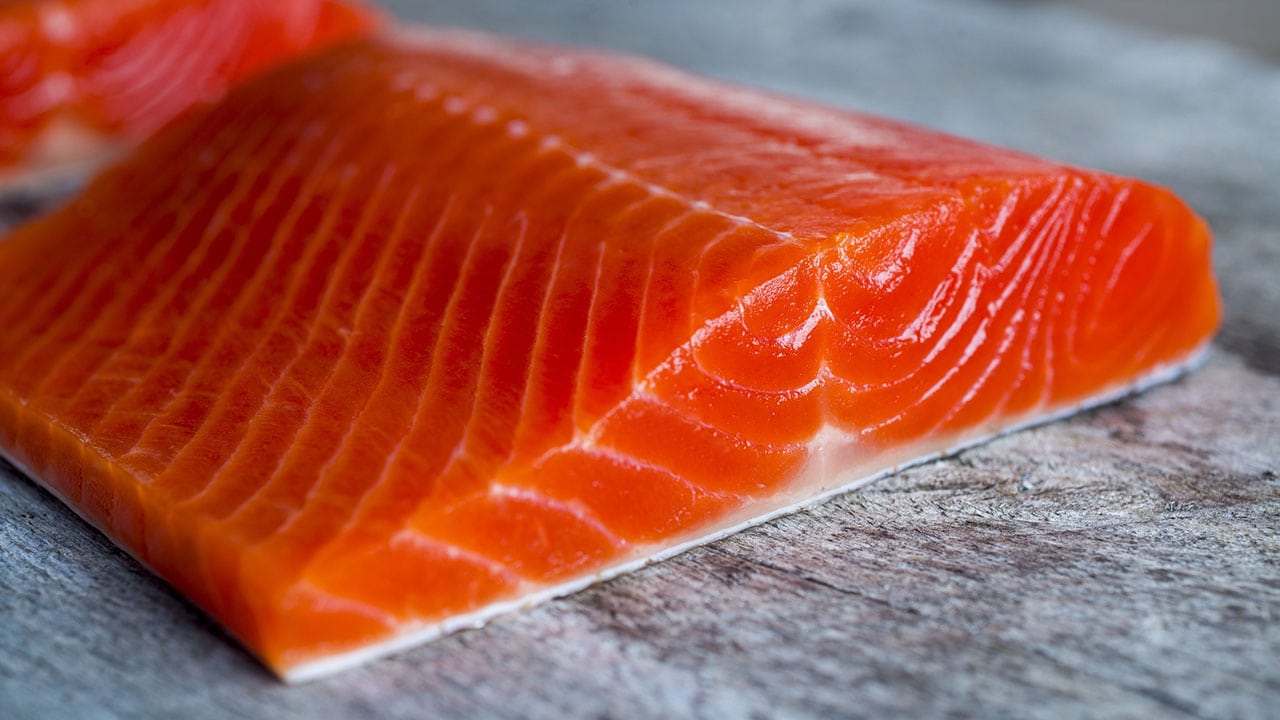3 Ways to Cook Frozen Salmon to Perfection
Try the Seafood Box today to get a taste of our delicious, wild-caught salmon, lobster, scallops, and cod.
Did you know salmon cooks up fast and delicious, straight from the freezer? Even better, learning the right techniques for how to cook frozen salmon is easy.
You might have a hard time picturing icy bricks of salmon turning into a warm, flaky fish dinner. Especially if you’re used to buying fresh salmon filets. But we promise it’s possible.
We’re sharing our favorite tips and a few simple tutorials on how to cook frozen salmon. You’ll learn how you can use your oven, air fryer, or Instant Pot to create wholesome salmon dinners straight from the freezer.
Keep reading for the full breakdown of how to cook frozen salmon perfectly.
5 Tips for How to Cook Frozen Salmon
1. Work with smaller cuts.
For the best results, use smaller frozen cuts of salmon (in the range of 6-ounce frozen fillets). While it’s totally possible to cook a whole side of salmon from frozen, there’s less margin for error.
It’s also true that cooking salmon from frozen will often yield less beautiful results, so we’d save our truly impressive cuts of fish for proper thawing and a special meal. Use our frozen salmon cooking techniques for nights when you forgot to take anything out and need dinner on the table, stat.
2. Don’t rinse the salmon.
You might read that you should rinse your frozen salmon under cool water to remove any ice crystals, but we’d skip this step, based on USDA final recommendations. If anything, it might leave your salmon a bit waterlogged.
3. Try a flavorful sauce for your salmon.
Salmon is an amazing blank canvas that takes well to so many flavor profiles, from a pesto sauce to a garlic brown sugar glaze. Use a quick sauce to amp up the flavor of your frozen salmon. We’ve included instructions for how you might do it with different cooking methods below.
BBQ salmon is a crowd favorite. A tangy barbecue-style sauce (like our Gochujang-Glazed Salmon) pairs nicely with this delicious fish and other fresh ingredients. Plus with a shorter cooking time, frozen salmon is a perfect dinner choice any night of the week.
4. Scrape off any unsightly bits.
If there is a trade-off to cooking salmon from frozen instead of fresh, it’s that it rarely turns out as pretty. You’ll likely encounter more bits of albumin, which is a white protein that’s found in all salmon and tends to ooze out with more aggressive cooking methods. This is perfectly safe; feel free to scrape it off. Plus as salmon thaws during the cooking process, it can start to fall apart. These flaky salmon pieces are delicious.
Still, cooking salmon from frozen can yield some truly delicious results. Serve it coated in a delicious sauce alongside fresh veggies, or perhaps flaked in some fried rice. We promise it’s just as good.
5. Here’s how you know frozen salmon is cooked.
If you’re new to cooking salmon, here are a few things you’ll see when it’s cooked through. The flesh will be opaque and no longer translucent. When pressed with a fork, the salmon will easily flake into small pieces. You might also see albumin.
Salmon is a bit like steak in that everyone has a different preference for doneness. Some chefs even leave it slightly translucent pink in the middle—or medium-rare.
In terms of doneness, the official FDA recommendation is an internal temperature of 145˚F as measured by a instant-read thermometer, which will be a very firm piece of fish.

How to Cook Frozen Salmon – 3 Basic Recipes
It’s 100 percent safe to cook salmon straight from the freezer, so long as you cook it at adequately high temperatures that keep it from “the danger zone.” This is the temperature range of 40°F to 140°F, where bacteria grow most rapidly.
So, slow-cooking frozen salmon in a slow cooker is out, but nearly every other cooking method is fair game. Make sure to cook your salmon thoroughly until the flesh is opaque and flakes easily.
Ready to get started? Here are three simple tutorials that will teach you how to cook frozen salmon in the oven, an air fryer, and an Instant Pot.
How to Cook Frozen Salmon in the Oven
To cook frozen salmon in the oven, you’ll want to accomplish two things: steam the fish, then roast it. Here’s the two-step method:
- Preheat your oven to 425°F. Place two frozen 6-ounce salmon fillets skin-side down in a baking tray and lightly coat with cooking oil and your preferred seasonings or sauces. Cover the dish tightly with heavy-duty aluminum foil. Bake the salmon for 15 minutes. This is the first step, steaming.
- Uncover your salmon and roast it for 10 minutes. This is the second part of the process, ensuring a crisp exterior.
How to Cook Frozen Salmon in the Air Fryer
The process for cooking air fryer frozen salmon is nearly identical to cooking it when it’s thawed. The only difference? You’ll cook it at a higher temperature for longer. Here’s a simple breakdown:
- Preheat your air fryer to 390°F. Coat your frozen salmon (6-ounce fillets) in your favorite seasonings.
- Cook your salmon in the air fryer basket for an initial 7 minutes. Then, flip it. If you’d like, add a sauce or glaze here. You can also add a pat of butter to each piece of salmon for succulence.
- Air fry the salmon for another 7 to 9 minutes.
How to Cook Frozen Salmon in the Instant Pot
The Instant Pot converts ice blocks of salmon into delicious, flaky, and warm fish in a matter of minutes. You’ll need your steamer trivet for this one.
- Add a mixture of lemon juice and water to the bottom on the Instant Pot (totaling about 1 cup).
- Add in your steaming trivet.
- Season your salmon. Place the frozen salmon fillets (6 ounces) on the trivet. You can place lemon slices and pats of butter atop each piece of salmon if you’d like.
- Lock the Instant Pot lid and set the Instant Pot to pressure cook for 5 minutes.
We hope these techniques help you to easily cook salmon straight from the freezer, without any fuss.
Common Salmon Seasonings
We hope these recipes get you started with cooking your frozen salmon to perfection. Here are some common and suggested starter seasonings for any salmon recipe:
- Kosher Salt or Sea Salt
- Black Pepper or Red Pepper Flakes
- Garlic Powder
- Onion Powder
- Olive Oil
Post-cooking you can add a drizzle of soy sauce or maple syrup.
Enjoy!
Visit our complete guide on cooking frozen seafood and frozen fish. And check out these salmon recipes from our blog:
- Gochujang-Glazed Salmon with Quick Pickled Cucumbers
- Salmon with Winter Greens and Salsa Verde
- Sesame Salmon Soba Bowls
- Sheet Pan Salmon with Broccolini and Sweet Potatoes
- Slow-Roasted Salmon with Citrus and Avocado
All of these recipes would work well with frozen filets of salmon instead of thawed filets. Just make the necessary cook time adjustments. You can even make extra and have leftover salmon for lunches the next few days.
For more recipes and guidance on how to cook frozen salmon or other frozen meats, check out the JustCook blog.
Try the Seafood Box today to get a taste of our delicious, wild-caught salmon, lobster, scallops, and cod.
Frozen Seafood Guide
Table of Contents
Home – How To Cook Frozen Seafood


